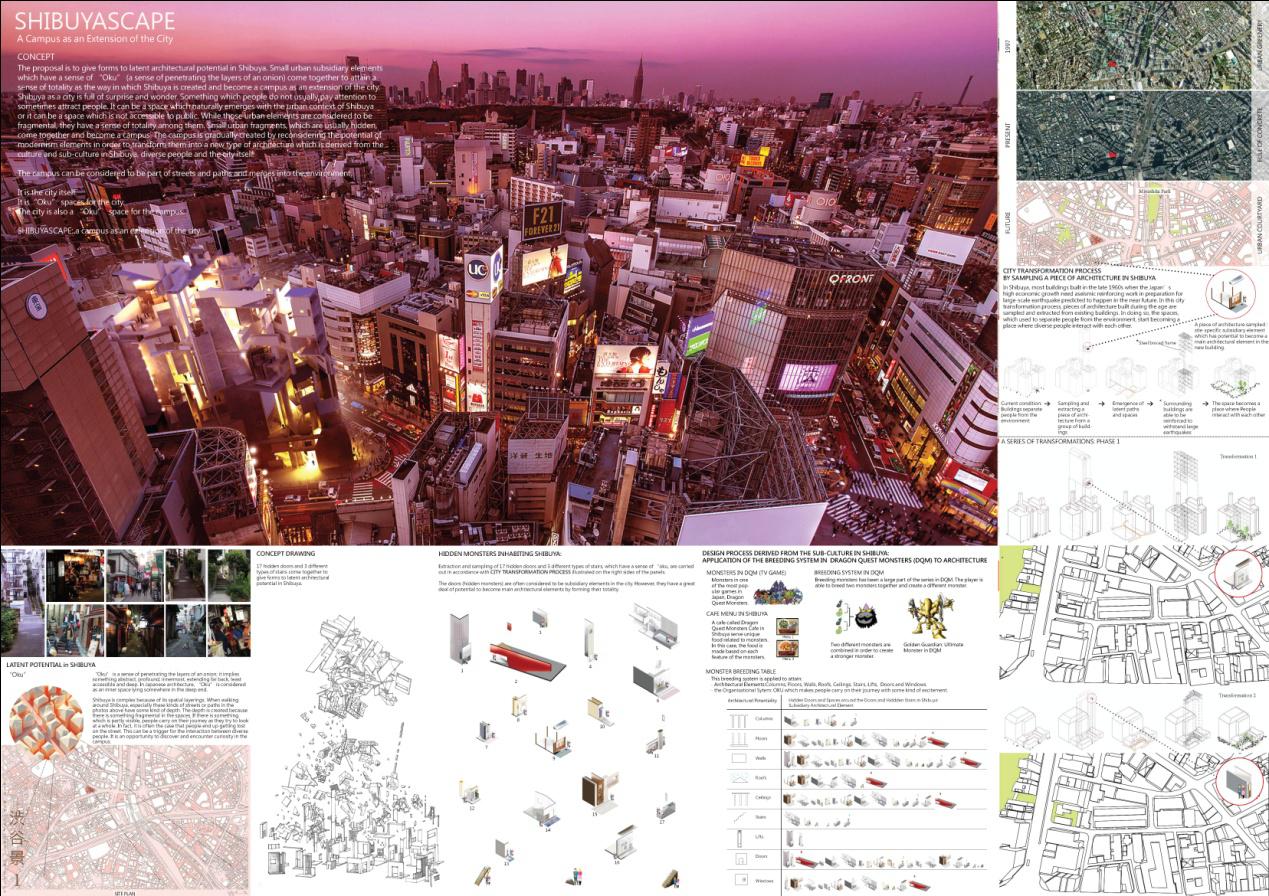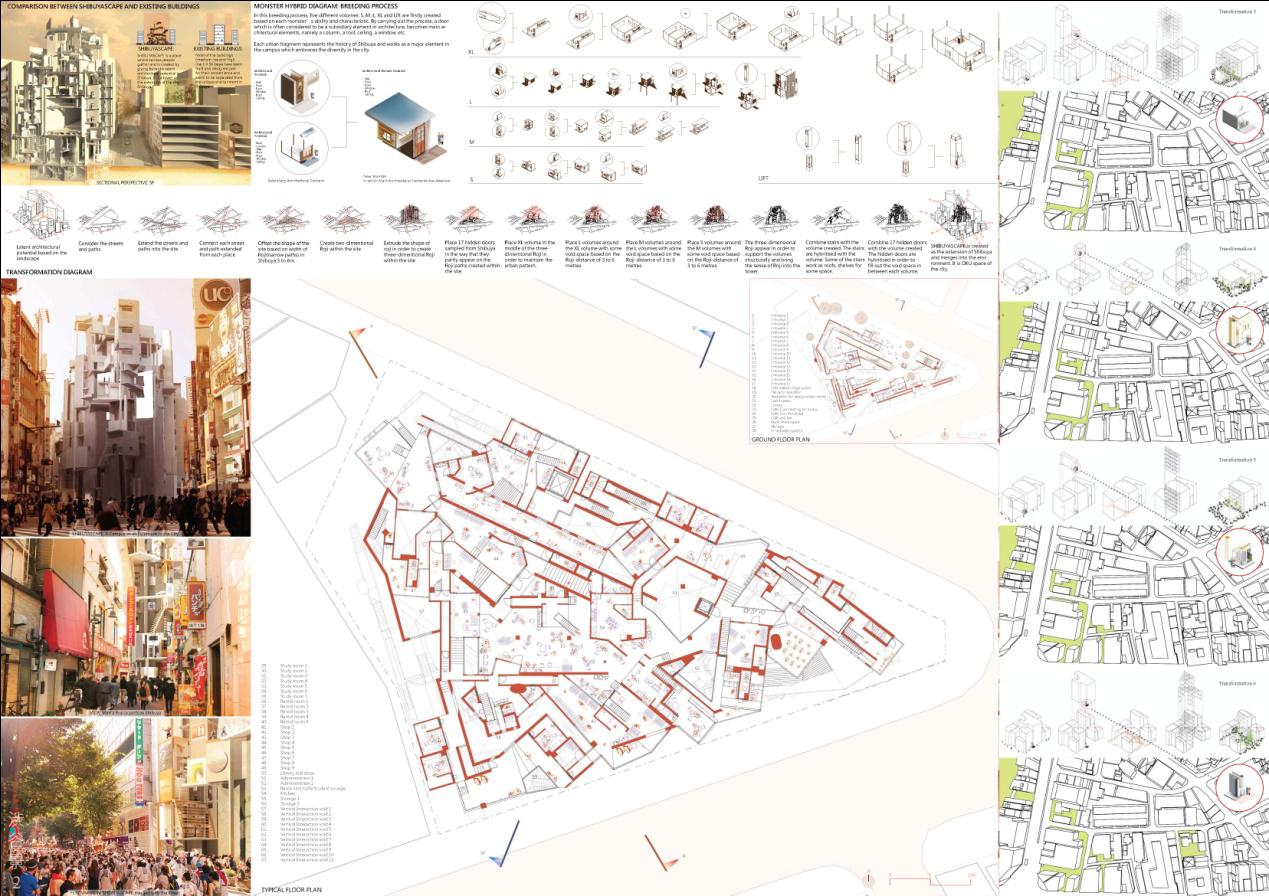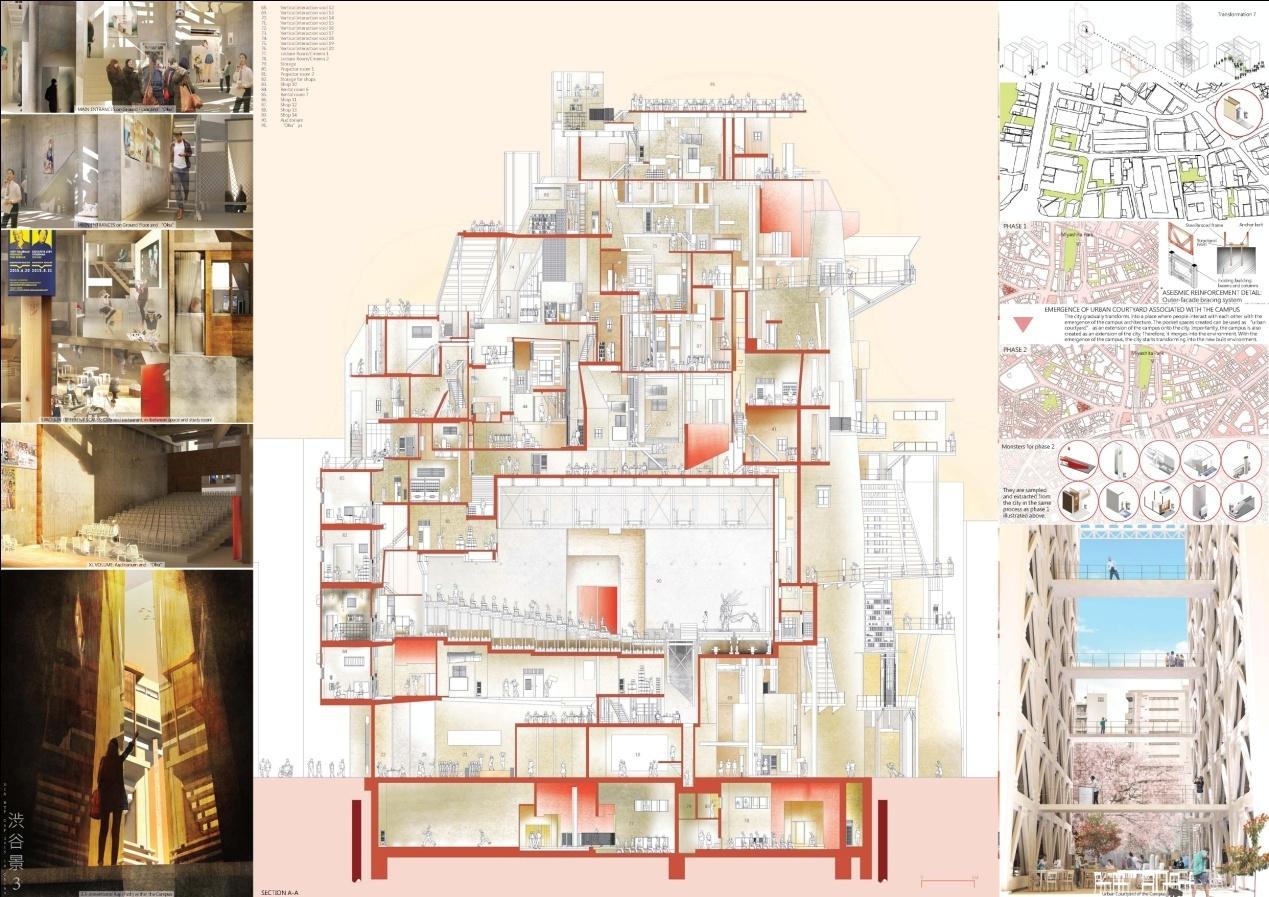

TOPIC: Transformation: Place, Tradition and Modernism in Conceptual Unity and Diversity
Students:Yuta Sano
Project :SHIBUYASCAPE – a Campus as an Extension of the City
Tutors :Laura Mártires、Eric Nakajima
School :The University of Melbourne

The proposal is to give forms to latent architectural potential in Shibuya. Small urban subsidiary elements which have a sense of ‘Oku’* come together to attain a sense of totality as the way in which Shibuya is created and become a campus as an extension of the city. Shibuya as a city is full of surprise and wonder. Something which people do not usually pay attention to sometimes attract people. It can be a space which naturally emerges in the urban context of Shibuya or it can be a space which is not accessible to public. While those urban elements are considered to be fragmental, they have a sense of totality among them. Small urban fragments, which are usually hidden, come together and become a campus.

The campus is gradually created by reconsidering the potential of so-called modernism elements in order to transform them into a new type of architecture which is derived from the relationship between the culture and sub-culture in Shibuya, diverse people and the city. The campus can be considered to be part of streets and paths and will merge into the environment.
It is the city itself.
It is ‘Oku’ space for the city.
The city is also ‘Oku’ space for the campus.
* Oku
‘Oku’ is a sense of penetrating the spatial layerings; it implies something abstract, profound, innermost, extending far back, least accessible and deep. In Japanese architecture, “Oku” is considered as an inner space lying somewhere in the deep end.

Shibuya is complex because of its spatial layerings. When walking around Shibuya, especially narrow streets or paths (Roji露地) have some kind of depth. The depth is created because there is something fragmental in the spaces. If there is something which is partly visible, people carry on their journey as they try to look at a whole. The city is organised by this sense of ‘Oku’. In fact, it is often the case that people end up getting lost on the street. This can be a trigger for the interaction between diverse people. It is an opportunity to discover and encounter curiosity in the campus.
Copyright 2013-2014 http://www.UEDmagazine.net/ All Rights Reserved Urban Environment Design (UED) Magazine Press©
Telephone:+86(010)56290935 Fax: 010-56290935
Address: No.85, Tonglinge Road,Xicheng District, Beijing, P.R.C
Postcode:100037 京ICP备 10013871号